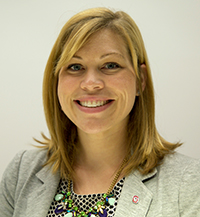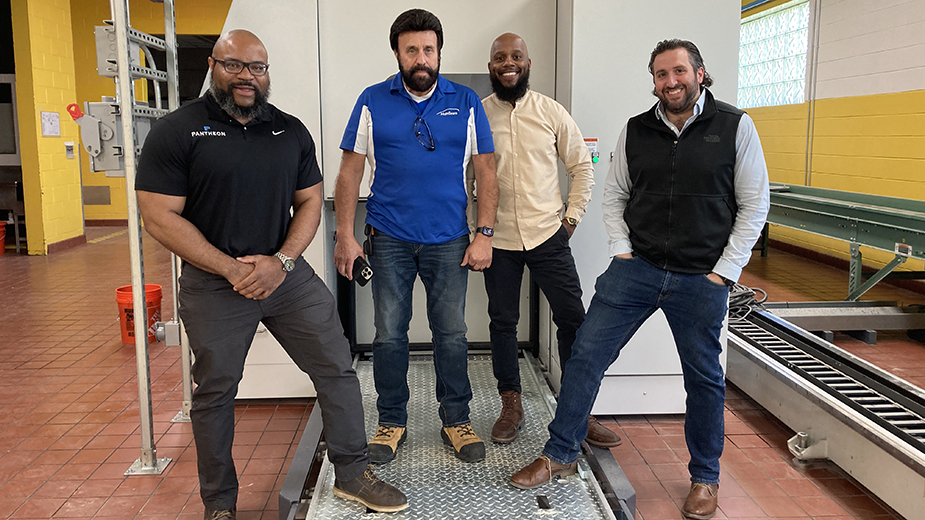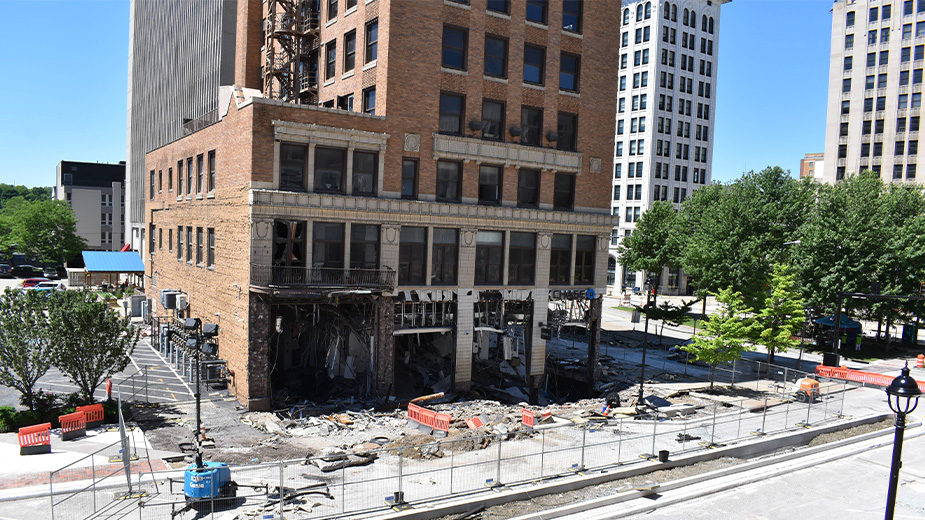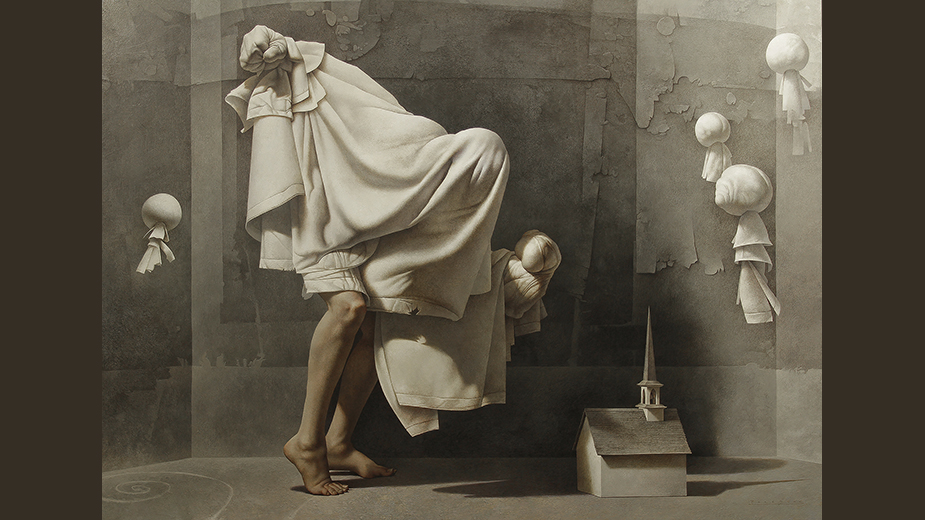The Concrete Houses That 3D Printing Built?
YOUNGSTOWN, Ohio – It uses concrete rather than lumber, and a computer instead of workers in hardhats.
A Youngstown-based startup is studying and honing techniques for concrete 3D-printed housing.
Pantheon Innovative Builders formed with a team of three. Ryan Kelly is the founder and CEO; Bryant Youngblood is the chief education and workforce officer; and Stephen Davis is the chief housing development officer.
“We started this about two-and-a-half, three years ago,” working with Ohio State University, Kelly says. “We were focusing on a collaborative partnership with them for focusing on research” with a 3D printer.
From there, Kelly started to look into construction development.
Pantheon is a Youngstown Business Incubator portfolio company.
The director of the YBI Evolve technology program believes 3D printed housing will play a role in housing affordability.
“The Pantheon team is led by three very driven founders, all with impressive backgrounds, giving them the IT factor needed to be leaders in the 3DP construction industry,” Chandler Fiffick said in an email. “3D printed homes are the next great step not only for sustainable, affordable housing in Ohio but also as it pertains to workforce development and upskilling within the construction industry.”
Workforce Development
Pantheon lists workforce development among its goals too.
“So, when I was looking into the future of the construction industry, number one, there was a major labor gap, a major shortage,” Kelly says. “Number two, we had a need for construction automation.”
But with new technology, you have to teach people how to use it, he says. That’s when he connected with Youngblood, who has a background in education.
“I noticed that there needs to be a connection between education and the actual employers, the workforce,” Youngblood says. “It only made sense that we started connecting and building the bridge between those two.”
He developed a curriculum and teaches it in area schools and summer- and after-school programs to provide foundational knowledge of 3D printing.
“We wanted to expose people to this technology to make sure they understood that there is a means of building a career in numerous industries,” Youngblood says.
More Efficiency Needed
That aligned with a need for affordable housing, Kelly says.
Davis, the Pantheon housing development officer, is an attorney and has worked in housing development in both the private and public sectors, primarily in urban and rural areas. He and Kelly were talking a lot and realized his passion for 3D printing and workforce development meshed with Davis’ experience in affordable housing.
“We need a more efficient way to build,” Davis says. “You have a shortage of labor. You have very high demand.”
To determine if 3D printing is a way to address that, Pantheon had to try it, he says.
“Where I also saw a connection was this conversation we’re having about workforce development,” Davis says. “In our area alone, we’ve got multiple companies that are either here or on their way here that are increasing the workforce. They need places to live.”
The Technology
Lisa Burris, a distinguished assistant professor of engineering at Ohio State University, says the normal use of concrete construction requires the use of form works to create the outside shell. Then concrete is poured into the form.

Concrete 3D printing removes the form work.
“Instead, what we’re going to do is build up layer by layer the shape that we want,” Burris says. “We’ll apply the concrete down to be that thickness of the wall that we planned for it and to go around the entire exterior of the building, some of the interior walls as well. And it will be just an inch or so at a time, built layer upon layer.”
It’s not faster than stick house construction yet, but it’s expected to be, as the technology and the process advance, she says.
There are some issues to be addressed before the technology is ready for widespread use, Burris says.
“One is that it’s just really difficult to 3D print with concrete compared with some other materials,” she says.
It’s done in the field in an uncontrolled environment where it could start raining, get very hot or very cold.
“All of that changes the flow of the material, the reaction rates…,” she says. “I like to kind of think of 3D printing in terms of cell phones. We’re in the sort of ‘briefcase in your car’ cell phone stage. We are not at iPhone [stage], which is where everyone expects it to automatically be.”
Companies like Pantheon and others that are working with the technology are essential to get the process to where it needs to be, she says.
“They need to start doing this at a real scale and figuring out some of those details to make it work,” Burris says.
The other challenge is when you build a house or any structure, you need to get code approval from the political jurisdiction where you’re working, she says.
“There’s not a good understanding of what the requirements need to be for concrete 3D printing yet — what strengths are necessary in the concrete, how to measure it,” Burris says. “This isn’t a solid piece of concrete anymore. It’s a bunch of layers.”
How to track tolerances and widths of the materials are up in the air as well, she says.
“Code inspectors are really unsure right now how to go about that,” she says. “They’re pretty instrumental in whether this moves forward or not, whether they’ll even allow it to happen.”
Another company printed a concrete house in western Ohio although it hasn’t been approved for use. And houses are being printed in other states.
But the federal government is investing millions of dollars into 3D printing. Burris points out that NASA views concrete 3D printing as a technology that will enable people to live on the moon.
With the interest level and the amount of federal money put toward the research, it could be within this decade that it becomes widely used and available, she says.

The government is awarding grants not just to academic institutions for research but to companies too.
Kelly says Pantheon is printing a coffee shop in Athens, Ohio, later this year. They expect to print houses in early 2025.
“We’re within 12 months from today of when that would start,” Davis says.
He said Pantheon is working on two 3D printed residential housing developments, one in Cleveland and one in Drums, Pa.
A Partnership
Pantheon, which is housed at the Excellence Training Center in Kohli Hall at Youngstown State University, is partnering with Mark Lamoncha, CEO of Humtown Products.
Humtown recently moved its additive manufacturing division, Humtown Additive, from Leetonia to Boardman.
Besides 3D printing, Lamoncha says he and Pantheon share a belief in the importance of training young people for careers needed in the workforce.
“The big thing you identify is there’s two big economic development challenges but also where we have to focus and that is in workforce development — education — and housing,” Kelly explains.
As an Ohio Board of Education member, Lamoncha realized the breadth of that need. He was appointed by Gov. Mike DeWine and is in his second term.
“Education. Workforce. It has to be coupled together,” he says.
Kelly says that with YSU and America Makes and the focus of several organizations on economic development with the newly established Lake to River region, the pieces are in place.
“And now the partnership where we’re at is we’re both passionate about addressing those economic development challenges and making sure that our area is a uniquely skilled area,” he says, referring to Pantheon and Lamoncha. “We were at one time a world leader in manufacturing. Now we have the opportunity to be a leader in advanced manufacturing and industry 4.0.”
No one has looked ahead and developed ways to integrate new technology into industry and prepare the workforce for it better than Lamoncha, Kelly says, calling the Humtown CEO a mentor.
Preparing Young People
Lamoncha pushes the need to prepare young people for careers and the role that industry plays in it.
“We have to focus on, by eighth grade, having them set and having real, hands-on [exposure], directly going in there and touching all the careers that are out there,” Lamoncha says.
He believes that early exposure, before students enter high school, would help them figure out a career path and lessen the number who drop out of college.
“If they can just get the exposure and get out and do these tours…it’s just that they don’t know what’s out there,” Lamoncha says.
He’s opening his Boardman facility to Boardman school students, as well as students who Youngblood is working with through Pantheon, to expose them to more 3D printing. Kelly says that will provide students with workforce-based learning opportunities. Lamoncha believes other companies should open their facilities for young people to learn too.
Having a Conscience
Davis says that’s part of being a company with a conscience and being mission driven. It’s more than building a house, he says.
“You want to build a home and in order to build a home, there is a certain level of completeness that goes with that,” Davis says. “And so, what we’re doing, we want to use 3D print technology to help build the house. But we want to use some of these things that we’re doing with education and teaching to create other opportunities.”
A standard desktop 3D printer operates the same way the 3D printer Pantheon will use, Kelly says.
“These are portable, transferable skills,” he says. “We have a department of education-approved curriculum throughout the state for industry-recognized credentials. What it will allow us to do is pilot our educational integration because the students we put through the work-based learning experience here, they will also be able to work at Pantheon as well.”
Youngblood believes young people will be interested in the technology.
“We’re going to strike their interest,” he says. “I think you’re going to push a generation of people who may not have been interested in the trades, they’re going to transition and find more interest. They’re going to dive into this new technology that changes the overall landscape of what a construction worker typically appears to be.”
Keeping Design in Mind
The Pantheon team understands the idea of a house that comes out of a printer won’t appeal to everyone right away. That’s where design comes in, Davis says. Designs that appeal in New Mexico, for example, may not catch on in Youngstown, Ohio, he says.
“You take that into account with your design and you get that sort of blend of the use of the technology, and making it look like something that is already in existence to be able to gain that acceptance,” Davis says.
Pictured at top: Stephen Davis, Mark Lamoncha, Bryant Youngblood and Ryan Kelly stand in front of a 3D printer at Humtown Products in Boardman. Davis, Youngblood and Kelly, chief housing development officer, chief workforce evolution officer and founder/CEO, of Pantheon Innovative Builders, respectively, are working on technology to build concrete 3D printed houses. Lamoncha, CEO of Humtown, is partnering with Pantheon.
Copyright 2024 The Business Journal, Youngstown, Ohio.



